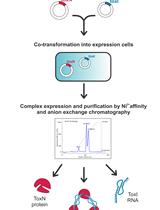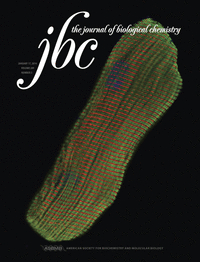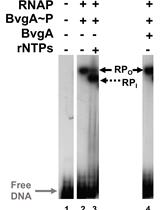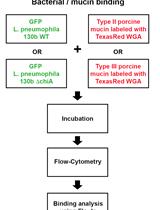- EN - English
- CN - 中文
Competitive ELISA for Protein-lipopolysaccharide (LPS) Binding
竞争性酶联免疫吸附试验检测蛋白和脂多糖(LPS) 的结合
发布: 2014年11月20日第4卷第22期 DOI: 10.21769/BioProtoc.1298 浏览次数: 15612
评审: Anonymous reviewer(s)

相关实验方案

从大肠杆菌中大规模纯化III型毒素-抗毒素核糖蛋白复合物及其成分,用于生物物理学研究
Parthasarathy Manikandan [...] Mahavir Singh
2023年07月05日 2116 阅读
Abstract
Lipopolysaccharide is the major constituent of the outer membrane of gram-negative bacteria and, once released from the bacterial surface into the bloodstream, is a potent activator of the host immune system, which can lead to septic shock. LPS has a hydrophilic region consisting of a repeating oligosaccharide that is strain-specific (O-antigen) and a core polysaccharide, which is covalently linked to a hydrophobic lipid moiety (lipid A). Lipid A is the most conserved part and is responsible for the toxicity of LPS. Therefore, finding molecules able to bind to this region and neutralize LPS toxicity is of relevant interest as it may provide new therapies to prevent septic shock (Chen et al., 2006). Several proteins and peptides were reported to bind LPS and alter its toxicity towards reduction and even enhancement (Brandenburg et al., 1998), such as serum albumin (Ohno and Morrison, 1989), lipopolysaccharide binding protein (LBP) (de Haas et al., 1999), casein (López-Expósito et al., 2008), lysozyme, the antibiotic polymyxin B and antimicrobial peptides (Chen et al., 2006). Although some of these proteins are neutral and even anionic/acidic (pI<7) (Jang et al., 2009), due to the amphipathic structure of LPS and the presence of negatively charged phosphate groups on the lipid A, the most important factors that are considered for optimal binding to LPS are a cationic/basic (pI>7) and amphipathic nature (Chen et al., 2006).
Here we describe a competitive ELISA that can be used to identify proteins or peptides that bind LPS, as a first approach before analyzing the possible activity in vitro and in vivo. In this ELISA, serial dilutions of the protein or peptide to be tested are preincubated with a fixed concentration of fluorescein isothiocyanate (FITC)-labeled LPS from Escherichia coli serotype O111:B4 and then added to wells of a microtitre plate which are blocked with a casein hydrolysate that binds LPS (Martínez-Sernández et al., 2014). Binding of the protein to LPS displaces LPS from binding to the casein, which is revealed using a horseradish peroxidase (HRP)-labeled anti-FITC polyclonal conjugate. This method allows simultaneous analysis of several proteins or peptides in a short period of time and no recognizing molecules (e.g., antibodies) to a specific protein or peptide are needed.
Materials and Reagents
- Casein (Hammarsten grade) (BDH Prolabo, VWR International, catalog number: 440203H )
- Lipopolysaccharides from Escherichia coli O111: B4-FITC conjugate (Sigma-Aldrich, catalog number: F3665 )
- Polymyxin B sulfate salt (Sigma-Aldrich, catalog number: P4119 )
- Proteins that were used for the example below (see Representative data) but which are not necessary for the assay:
- Salts
- Sheep anti-FITC: HRP (Bio-Rad Laboratories, AbD Serotec, catalog number: 640005 )
- SIGMAFASTTM OPD (Sigma-Aldrich, catalog number: P9187 )
- Tween® 20 (Merck KGaA, Merck Millipore, catalog number: 822184 )
- 0.3 M NaOH (prepared from 50% w/w NaOH solution) (18.94 M) (Sigma-Aldrich, catalog number: 415413 )
- 7.4% HCl (37% commercial solution diluted 1/5 with distilled water) (Merck KGaA, Merck Millipore, catalog number: 100317 )
- Phosphate buffered saline (PBS) containing 0.05% Tween® 20 (PBS-T)
- 3 N H2SO4 (1.5 M)
- Casein hydrolysate solution (see Recipes)
- Concentrated PB (see Recipes)
- PBS (see Recipes)
- PBS-EDTA (see Recipes)
Equipment
- 96-well microplate (polystyrene with clear flat bottom wells) (Greiner Bio-One GmbH, catalog number: 762071 )
- Automatic (mono- and multichannel) pipettes and pipette tips
- Calibrated beakers, graduated cylinders and conical flasks
- Magnetic stir bars and magnetic stirrer
- Manual or automatic microplate washer (e.g., DAS plate washer)
- Microcentrifuge tubes (e.g., Eppendorf; Kartell, catalog numbers: 297, for 1.5 ml , and 1298 , for 0.5 ml tubes)
- Microplate adhesive sealing films (e.g., AlumaSeal® II film; Sigma-Aldrich, catalog number: A2350 )
- Microplate reader (equipped for measuring absorbance at 492 nm) (e.g., Beckman Coulter, model: Biomek® plate reader )
- Microtitre plate shaker with a small orbit diameter (preferably 1.5 mm) set to 750 rpm (e.g., Stuart, model: SSM5 )
- pH meter
- Reagent reservoir for multichannel pipettes
- Scales
- Shaking incubator set to 37 °C and 150 rpm (e.g., Panasonic Corporation, SANYO Electric, model: Orbi-Safe TM)
Procedure
文章信息
版权信息
© 2014 The Authors; exclusive licensee Bio-protocol LLC.
如何引用
Readers should cite both the Bio-protocol article and the original research article where this protocol was used:
- Martínez-Sernández, V. and Ubeira, F. M. (2014). Competitive ELISA for Protein-lipopolysaccharide (LPS) Binding. Bio-protocol 4(22): e1298. DOI: 10.21769/BioProtoc.1298.
- Ohno, N. and Morrison, D. C. (1989). Lipopolysaccharide interaction with lysozyme. Binding of lipopolysaccharide to lysozyme and inhibition of lysozyme enzymatic activity. J Biol Chem 264(8): 4434-4441.
分类
微生物学 > 微生物生物化学 > 蛋白质 > 相互作用
生物化学 > 蛋白质 > 免疫检测 > 酶联免疫吸附试验(ELISA)
生物化学 > 脂质 > 脂质-蛋白互作
您对这篇实验方法有问题吗?
在此处发布您的问题,我们将邀请本文作者来回答。同时,我们会将您的问题发布到Bio-protocol Exchange,以便寻求社区成员的帮助。
Share
Bluesky
X
Copy link










